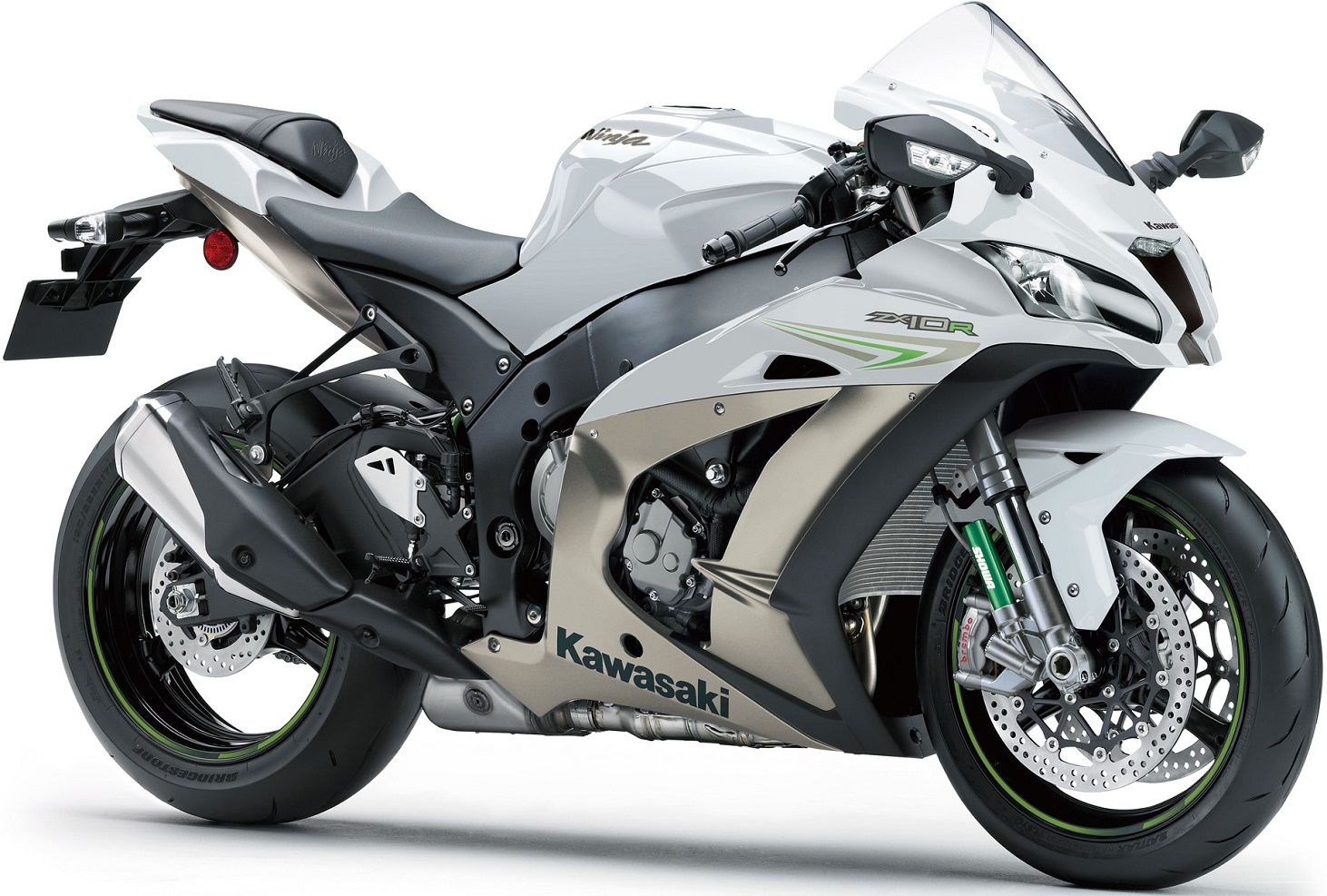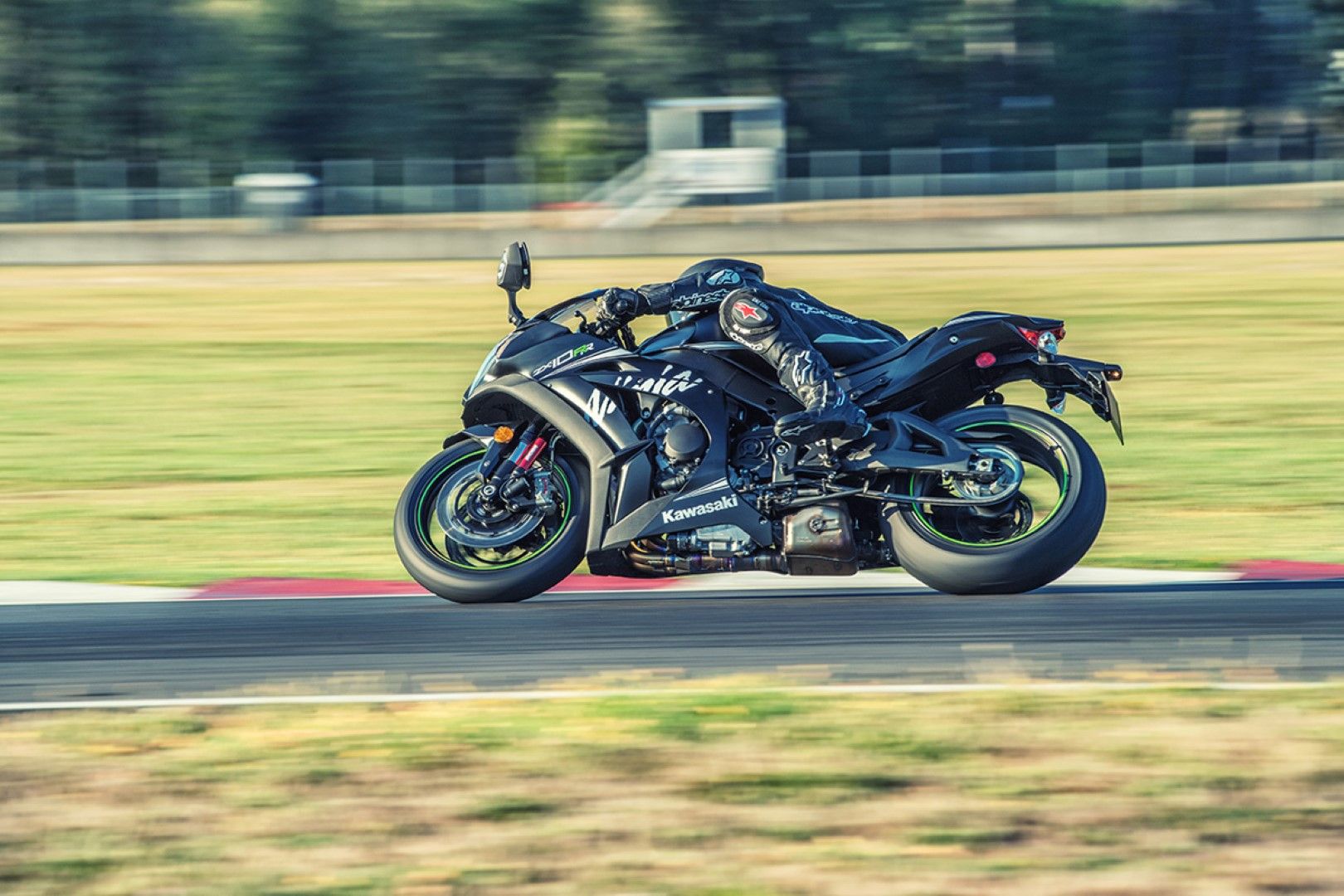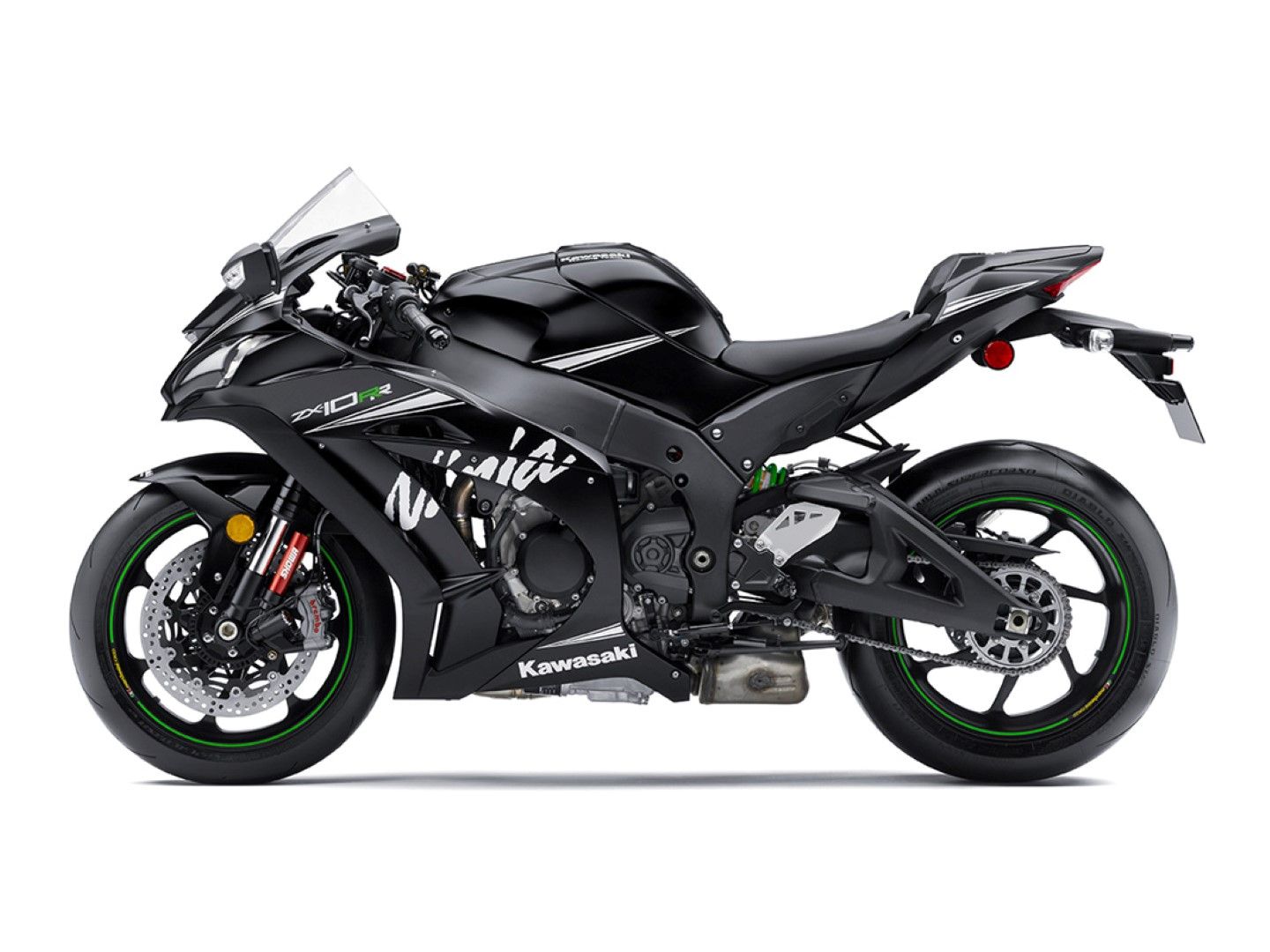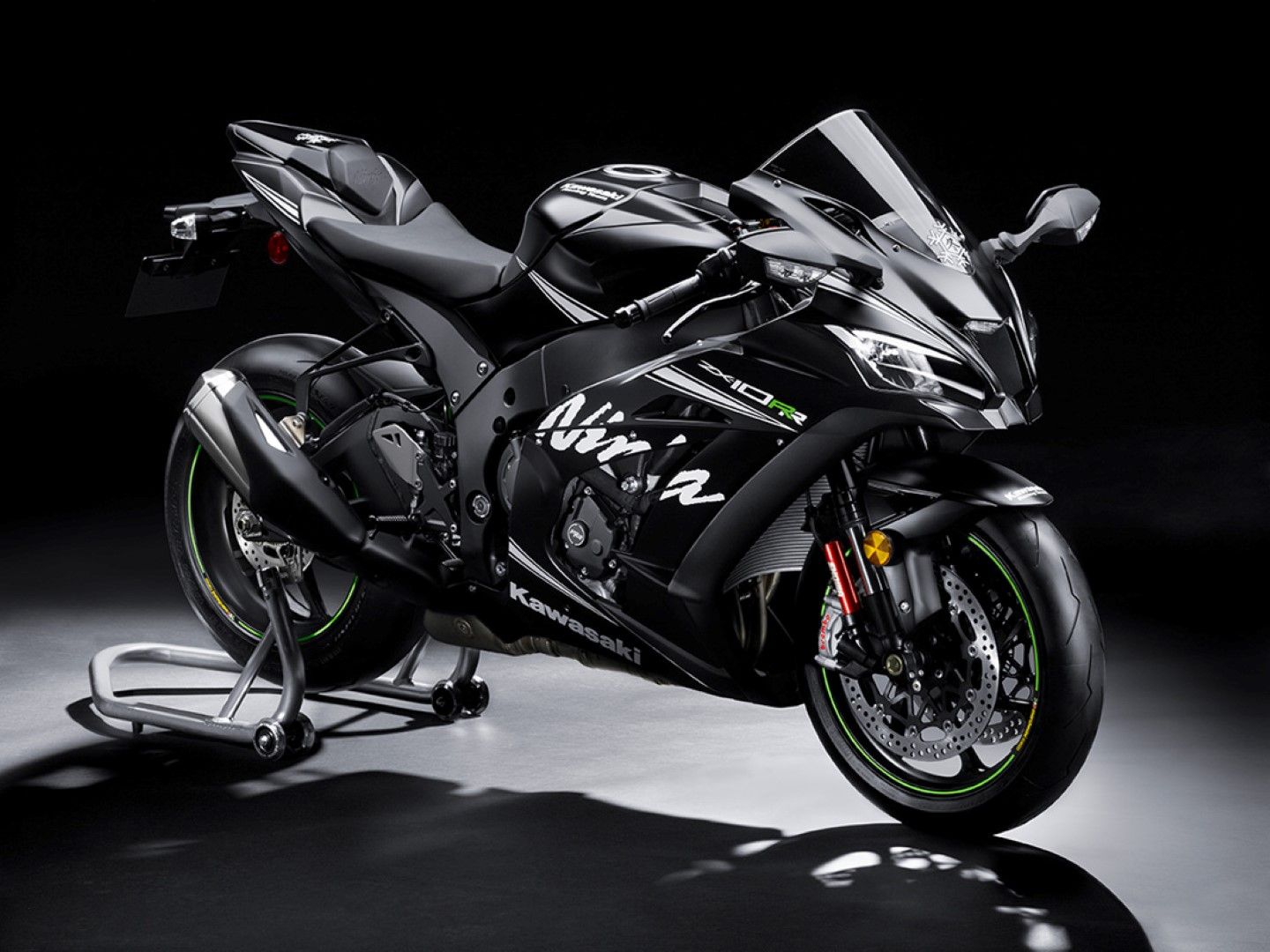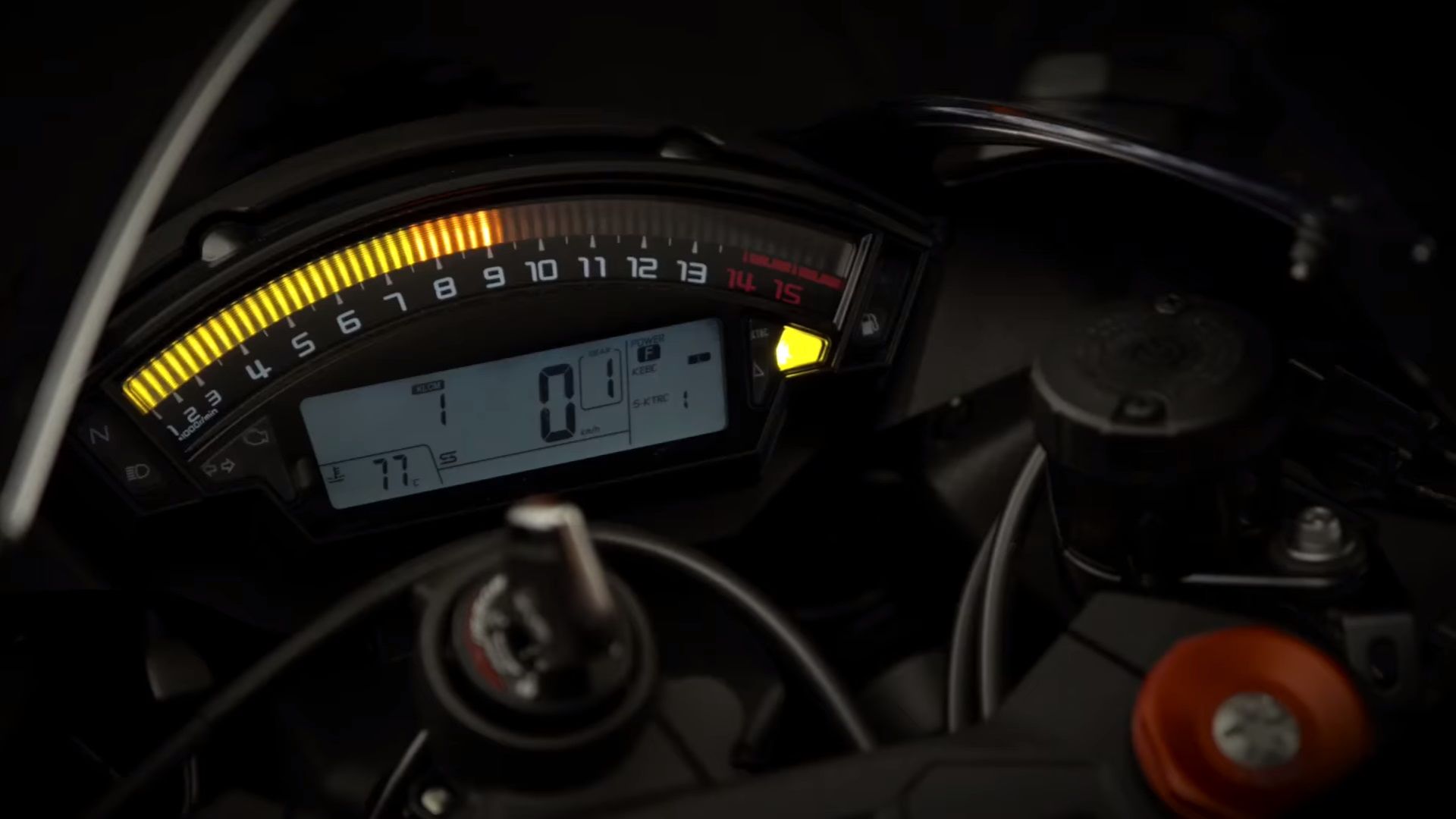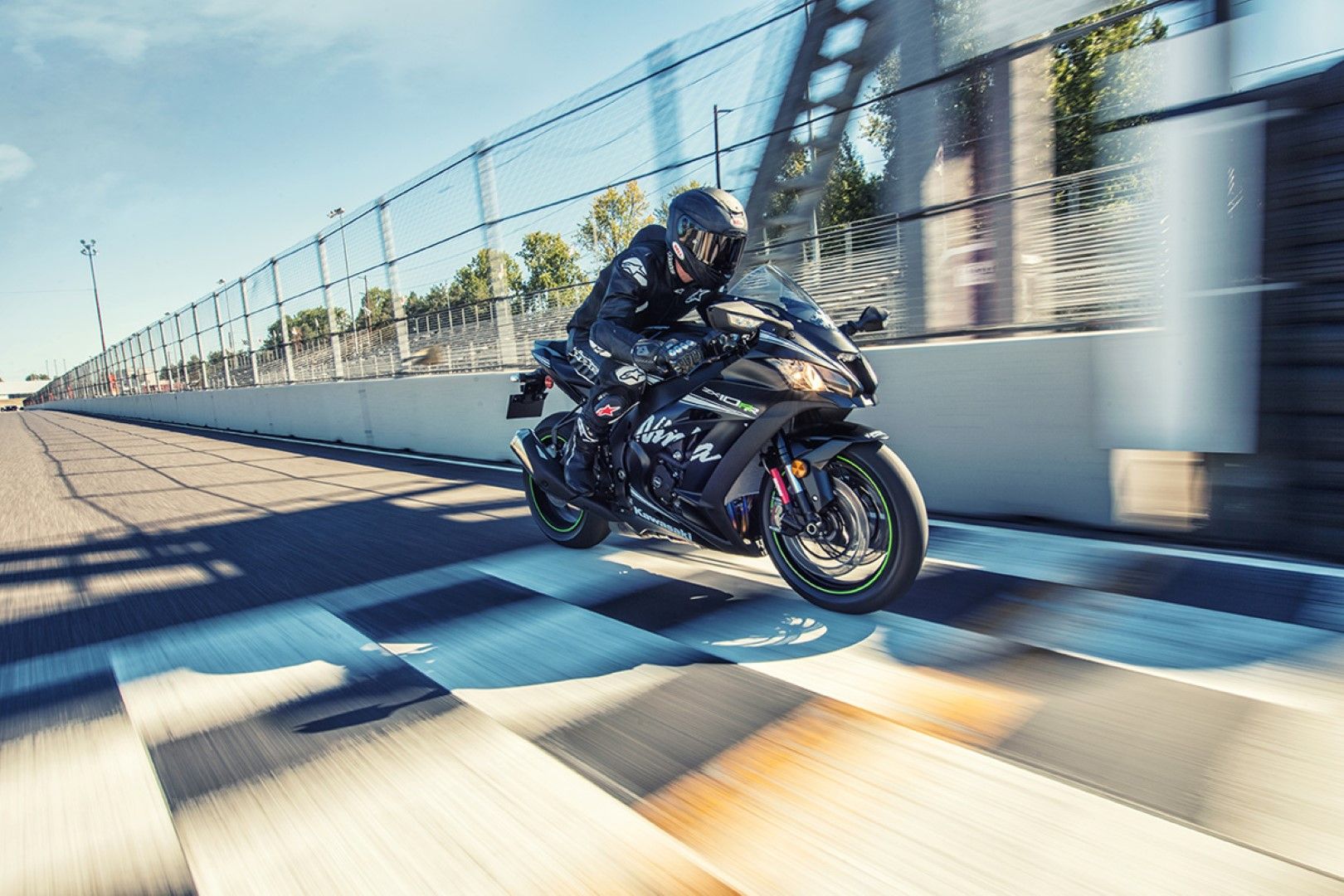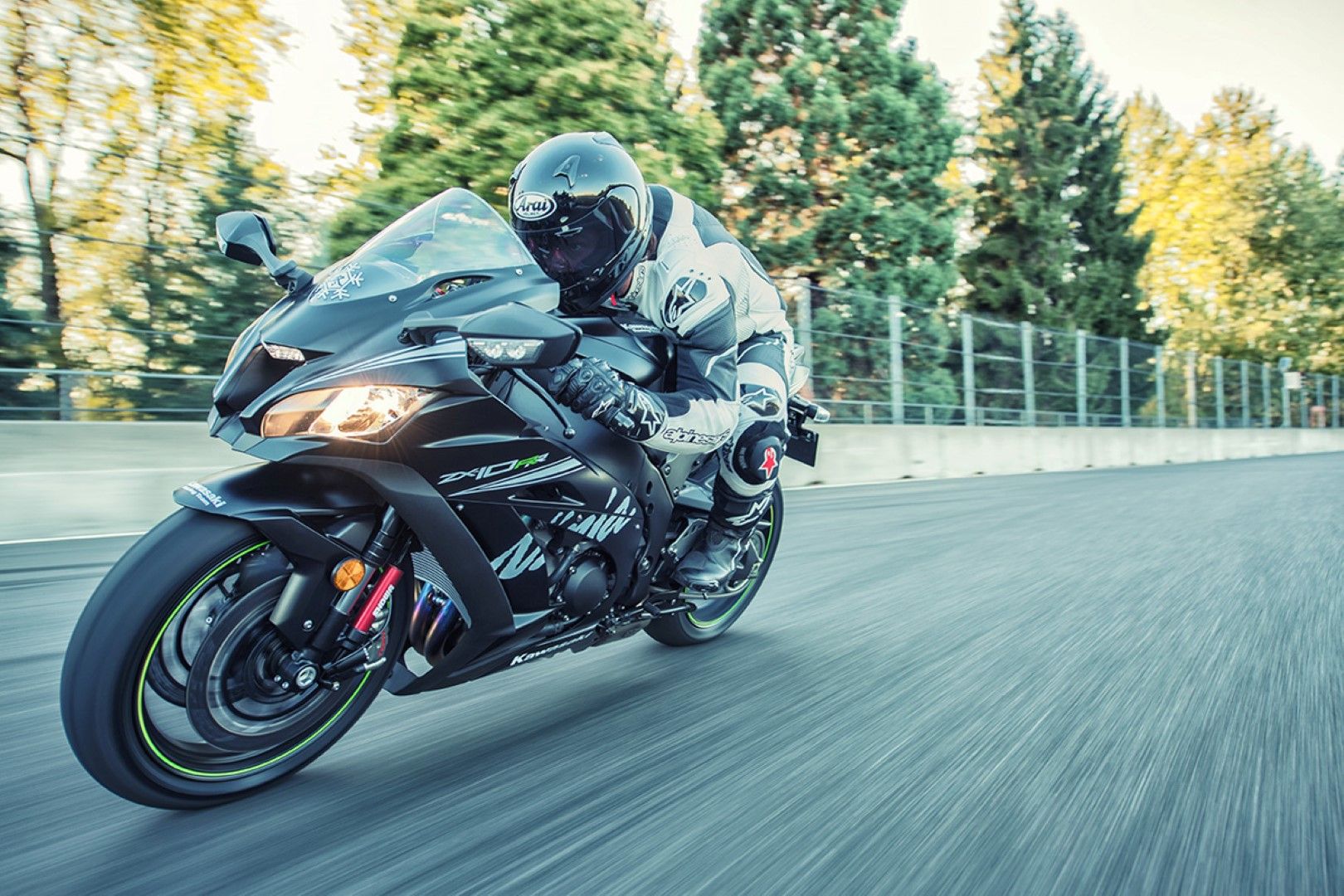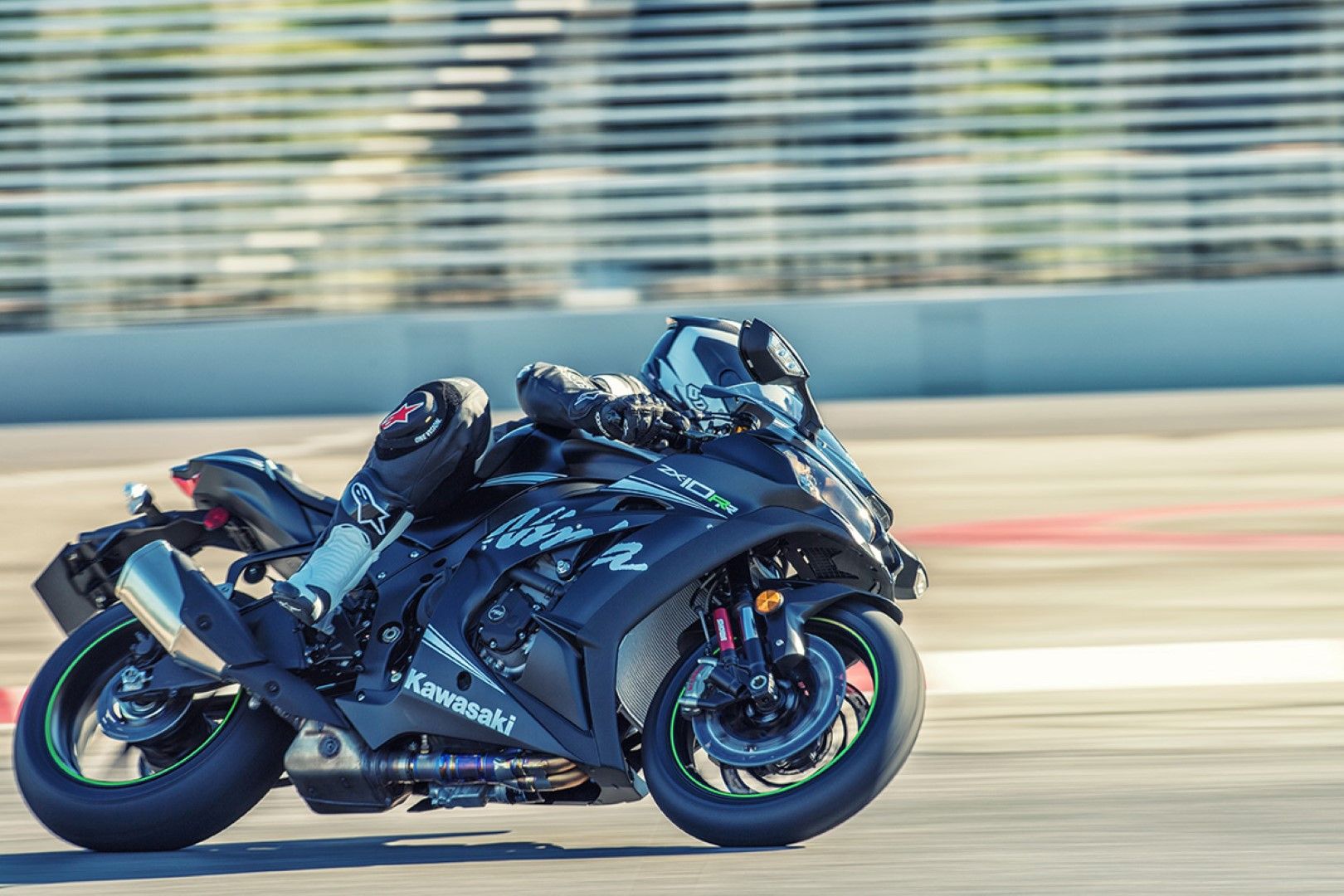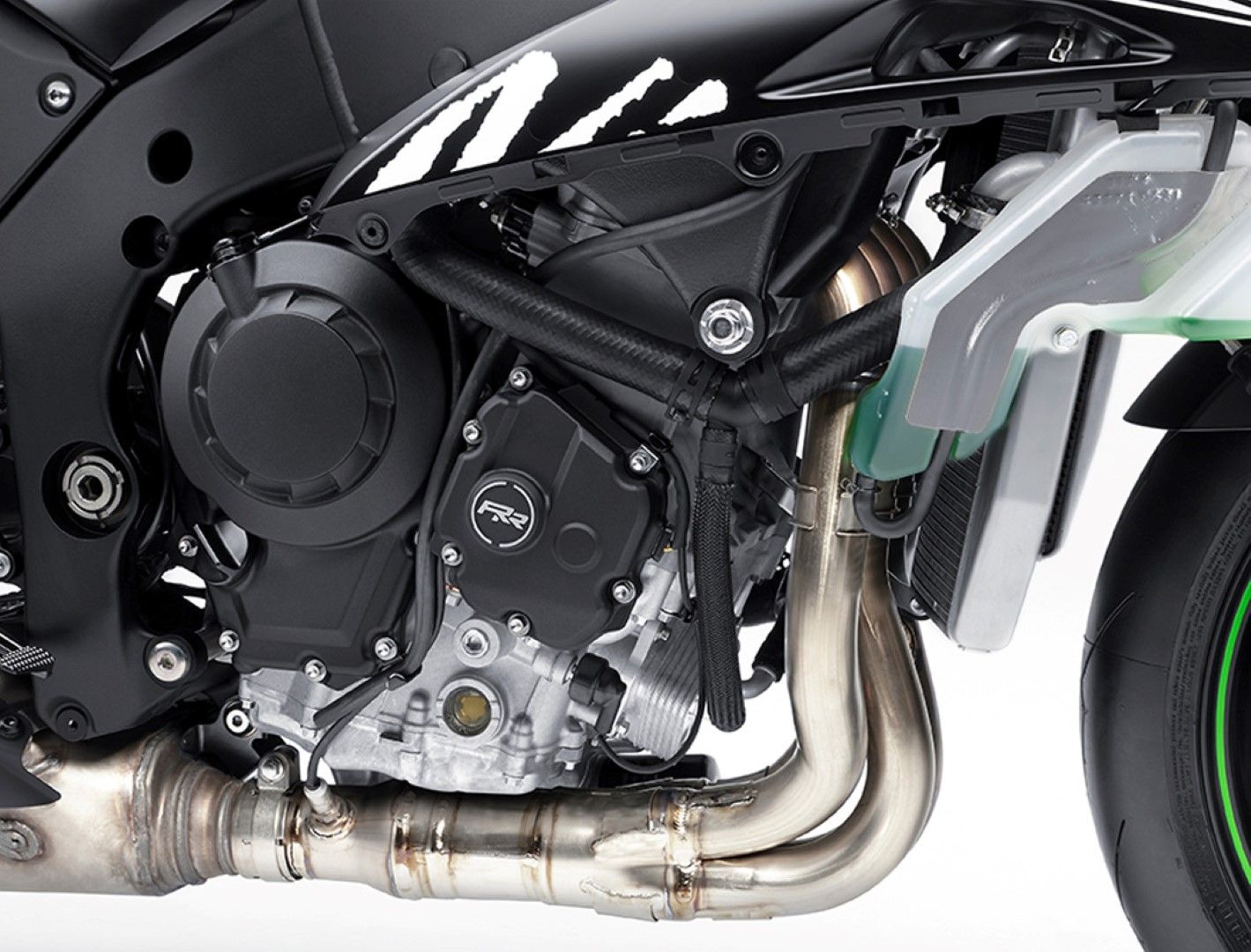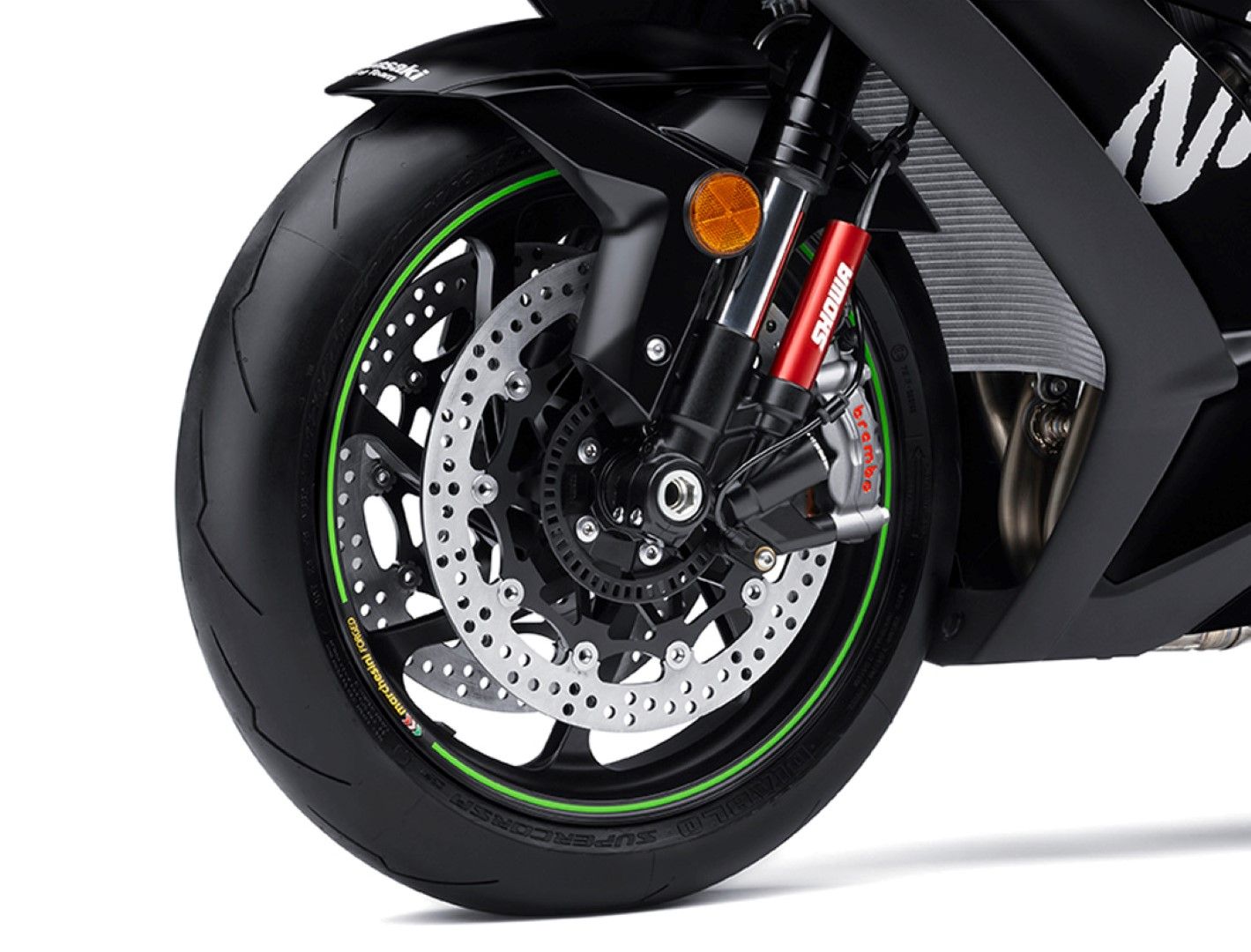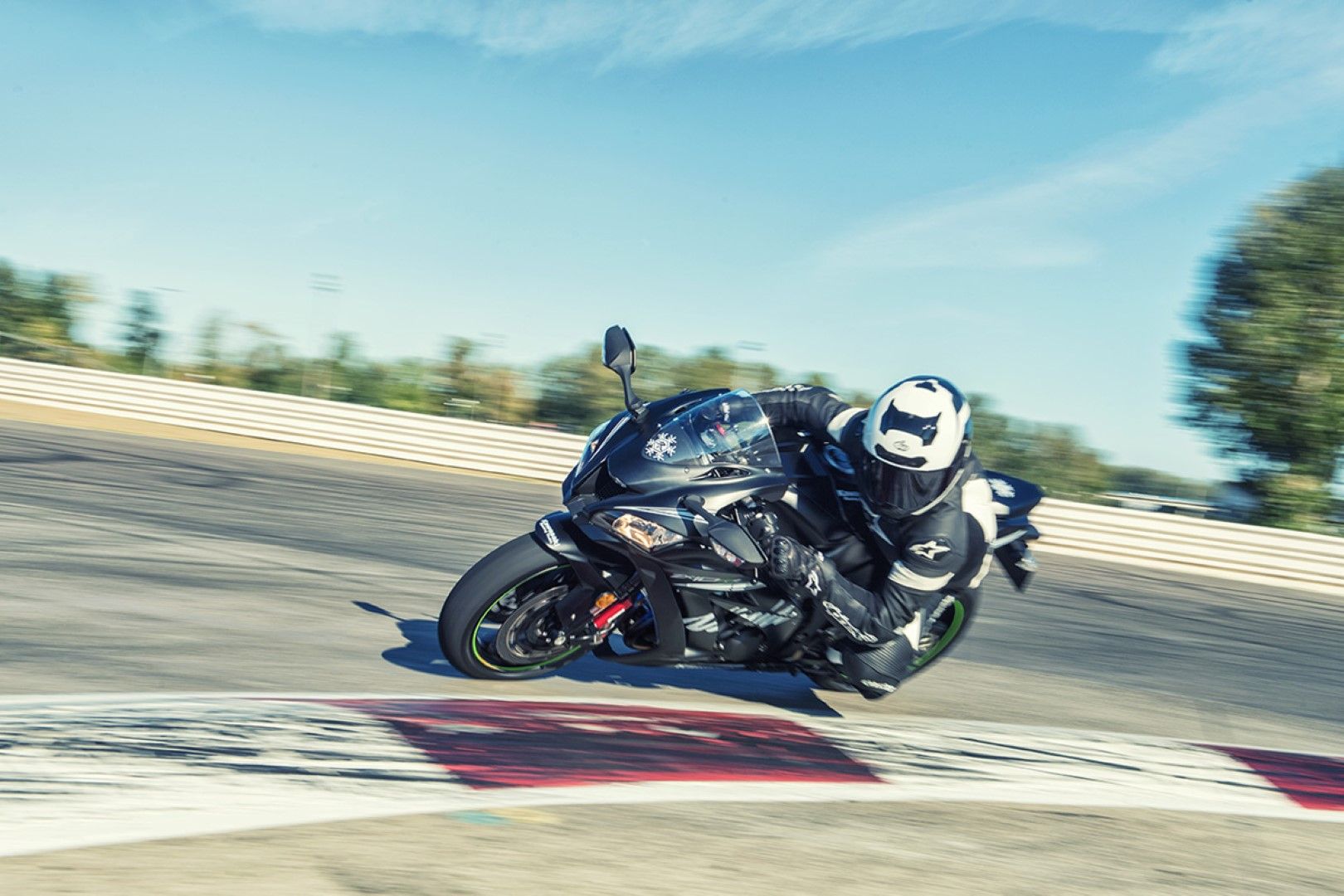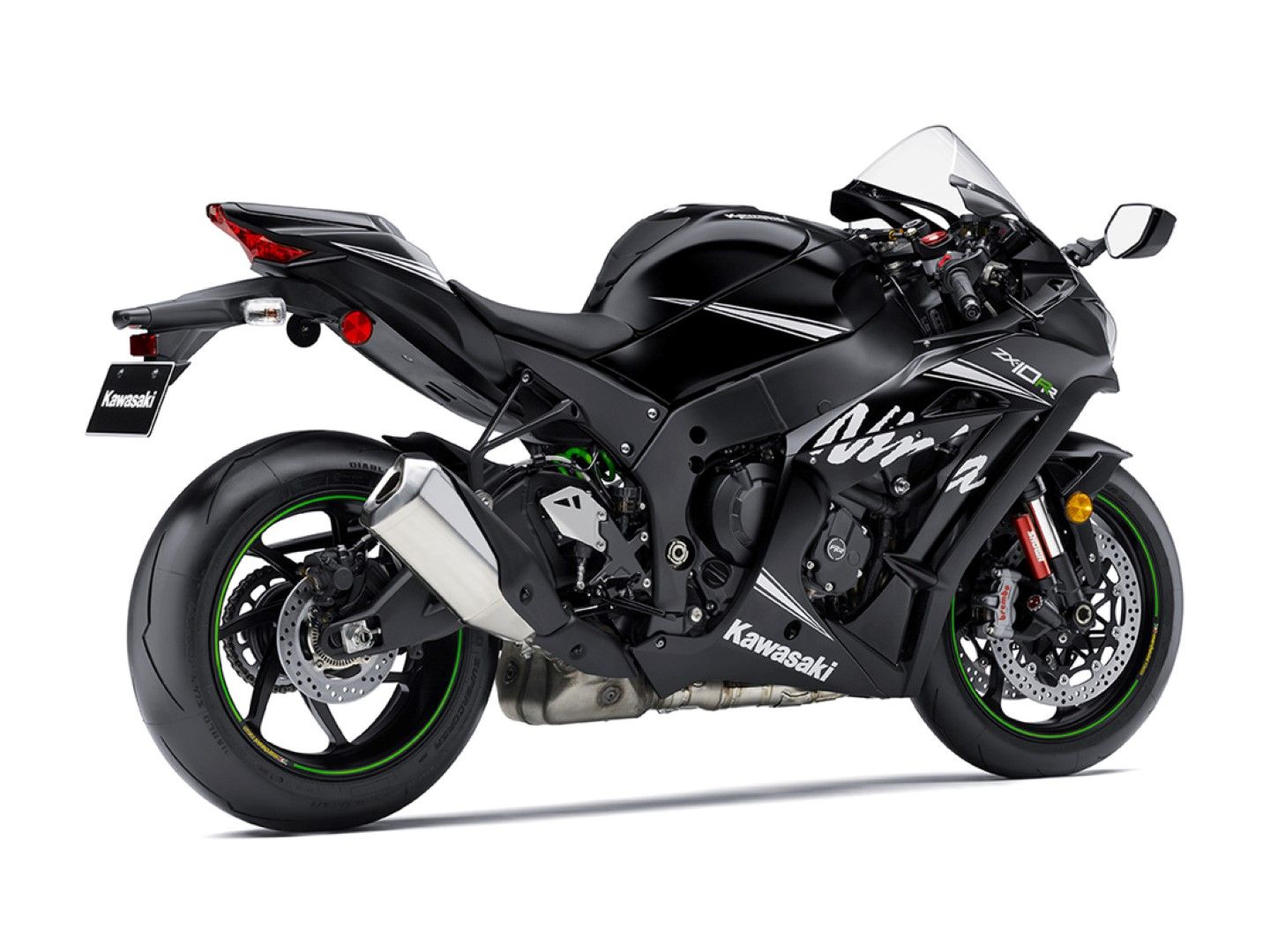Towards the end of 2015, Kawasaki surprised everyone with the much-awaited upgrade to its litre class supersport, the Ninja ZX-10R. The motorcycle, which has always remained as one of the one of the most user-friendly and equally precise-to-use supersport in the world, received a thorough upgrade in each aspect, be its design, performance, mechanicals and set of electronics.
Within a year of its official launch, Kawasaki has mildly updated the motorcycle by giving in a few more equipment and mild changes to its powertrain. But instead of launching it as the ‘all new Ninja ZX-10R’, Kawasaki is terming this new version of the motorcycle as an additional variant of the same. Say hello to the new limited edition Ninja ZX-10RR then.
It promises to be sportier and more eager to roar than the standard ZX-10R with the Japanese Green team giving it WSBK hardware and software and has dropped all unwanted stuff to give you a competitive edge on the track and the streets. Here’s a quick look at what all changes do the new Ninja ZX-10RR is adorned with, over the standard ZX-10R:-
2017 Kawasaki Ninja ZX-10RR
- Make: Kawasaki
- Model: 2017 Kawasaki Ninja ZX-10RR
- Engine/Motor: V8
- Horsepower: 670
- Torque: 560
- [do not use] Vehicle Model: 488 gts
STYLING
ids=718336,718339 | no_overlay=true> | |
2016 Kawasaki Ninja ZX-10R | 2017 Kawasaki Ninja ZX-10RR |
From a distance, you might feel that the new Ninja ZX-10RR hasn’t undergone any change over the standard Ninja ZX-10R, but a closer inspection will reveal the minute changes which Kawasaki has carried out for the new version of its litre class track tool. There are a couple of small cosmetic changes which have livened up the appeal of the motorcycle, with of course loosing the passenger footpeg mounts and a rear seat for weight reduction.
First of all, the Ninja ZX-10RR comes with the same curvaceous headlamps and revamped front fairing which made their debut on the latest Ninja ZX-10R, which mimic that of the bigger Ninja ZX-14R. The central air scoop between both the headlamps has been kept intact, so is the LED pilot lamp above it. Keeping in mind the customer feedback, the front windshield is now larger than before, and a bit swooped out at the rear to deflect wind blasts at higher speeds.
It is the side profile where there are slight but noticeable changes on the motorcycle. The side fairing, as well as fuel tank, carry forward their respective designs from the standard Ninja ZX-10R, however, the wheels on both the ends are new lightweight Marchesini units, which look better than those of the standard Ninja ZX-10R. Also, the Ninja ZX-10RR comes with a different Winter Test paint scheme which is usually reserved for special edition motorcycles of Kawasaki. The revised tail section with new LED tail lamp and new fender which premiered with the standard Ninja ZX-10R has been retained on the Ninja ZX-10RR as well. The exhaust pipe too has been lifted off from the standard version of the Ninja ZX-10R.
Like the overall design language, the fully digital instrument console too has been shared with the standard Ninja ZX-10R. This particular unit comes with a rainbow shaped tachometer, below which sits a rectangular LCD panel which shows the readouts for speedometer, odometer, trip meters, engine temperature gauge, gear indicator, clock, selected ride mode, et al. The rear view mirrors are all new, but they still have integrated turn indicators in them.
Though the Marchesini wheels and a new paint job definitely make it look more appealing than the standard Ninja ZX-10R, but to be honest, we would have liked to see more noticeable cosmetic changes on the new Ninja ZX-10RR.
Make Model | 2017 Kawasaki Ninja ZX-10RR | Suzuki GSX-R 1000 | Honda CBR1000RR SP |
Length | 82.3 in | 81.7 in | 81.3 in |
Width | 29.1 in | 27.8 in | 28.14 in |
Height | 45.1 in | 45.1 in | 44.30 in |
Wheelbase | 56.7 in | 56.7 in | 55.27 in |
Seat height | 32.9 in | 32.5 in | 32.2 in |
Wet weight | 454.2 lb | 448 lb | 429 lb |
Fuel capacity | 4.5 gal | 4.2 gal | 4.2 gal |
POWERTRAIN
Apart from a minor cosmetic change carried out for the Ninja ZX-10RR, the basic powertrain of the motorcycle too has undergone a couple of small changes as well. With inputs from the WSBK experiences, Kawasaki has updated the already potent ZX-10R engine with new engine enhancements and stronger, reinforced engine cases to uplift the performance package on the ZX-10RR.
On the new Ninja ZX-10RR, the overall engine and gearbox combination has been carried forward - the engine is the same four stroke, liquid cooled, inline four, 998cc engine, which pumps out 197bhp of power and 83.3 lb.-ft of torque. With the help of ram air input, the power can be bumped up to 204bhp as well. Nonetheless, riders can set their preferred power delivery modes ( Full: 100%, Middle: 80%, Low: 60%).
The engine gets DLC (Diamond-Like Carbon) coating for reduced friction loss along with lightweight crankshaft for a quick revving and increased throttle response configuration. Electronic throttle valve and Kawasaki Engine Brake Control (KEBC) contribute efficient sync of electronic rider aids for that precise feel and control. The bike comes equipped with Kawasaki Quick Shifter (KQS) that facilitates upshifts without clutch activation for that insane build of acceleration.
Increasing the weight-reduction elements of the bike, Titanium-alloy exhaust system makes use of special heat-resistant alloy proprietary to Kawasaki. It helps in improving the power-weight ratio and heighten the motorcycle's styling as well as the engine’s peak performance while giving you a cracking exhaust note.
Engine Specification
Make Model | 2017 Kawasaki Ninja ZX-10RR | Suzuki GSX-R 1000 | Honda CBR1000RR SP |
Capacity cc | 998 | 999.8 | 999 |
Bore/ Stroke in | 76/55 | 76/55.1 | 76/55 |
Output | 197 bhp | 200 bhp @ 13500 rpm | 189 Bhp @ 13000 rpm |
Torque | 83.3 lb.-ft | 87 lb.-ft @ 10000 rpm | 85.5 lb.-ft @ 11000 rpm |
Type | 4-stroke, Inline 4 cylinder, DOHC, 4-valve, Liquid-cooled | 4-stroke, liquid-cooled, 4-cylinder, DOHC | Liquid-cooled 4-stroke 16-valve DOHC Inline-4 |
Clutch type | Wet- Multiplate with slipper assist | Wet- Multiplate with slipper assist | Wet- Multiplate with slipper assist |
Transmission | 6-speed, return shift | 6-speed with Bi-directional Quick-shift System | 6-speed with quick shifter and auto-blipper |
RIDE AND HANDLING
On the new Ninja ZX-10R SE, the new revised frame and suspension combination of 43mm fully adjustable balance free telescopic forks at the front and a horizontal back-link with balance free gas charged mono shock at the rear has been lifted off from the standard Ninja ZX-10R. The chassis has been completely re-modified with optimised geometry for ultimate feel and feedback. Both frame and the swingarm contribute to sharp handling and excellent cornering speeds. The steering stem and the swingarm can be adjusted as well to suit track and city riding conditions. Electronic Ohlins steering damper provides the optimum amount of damping based on the speed and steering inputs.
Showa’s WSBK tech makes its way into the bike with its 43mm Balanced Free Fork (BFF) suspension unit at the front benefit the rider with increased ride comfort and feel. Independently adjustable compression and rebound damping keep te bike planted when you hoon the track around with the ZX-10RR. At the rear, you will find the horizontal back-link suspension setup that also carries the Showa Balance Free Cushion (BFRC) shocks.
Top of the line Brembo brakes features dual 330 mm semi-floating discs that replace the petal ones used previously. Radially mounted aluminium callipers are the best ones available in any store that give amazing braking force and feel to the rider. Confident stops are what they are all made of, and they deliver. Stainless steel braided lines provide the rider with a direct connection at the lever. Kawasaki’s Intelligent ABS (KIBS) system gives precision control to modulate brake pressures and ensure maximum traction to stop the beast.
Talking about electronics, this Japanese Green machine gets loads of it, all borrowed from the company’s WSBK stints. As expected, the new Ninja ZX-10R SE gets the same list of electronic aids as that of the Ninja ZX-10R. It includes a Bosch IMU that inputs 6 degrees of freedom to enable precise chassis orientation, corner management function, 3 level Kawasaki Launch control mode (KLCM), 5 level Kawasaki Sport Traction Control (S-KTRC), Kawasaki Engine Braking Control (KEBC), all of which work efficiently in making the riding as well as braking experience a bit more engaging in the part of the rider.
Chassis Specifications
Make Model | 2017 Kawasaki Ninja ZX-10RR | Suzuki GSX-R 1000 | Honda CBR1000RR SP |
Suspension / Front | 43mm inverted Balance Free Fork, adjustable stepless rebound and compression damping, spring preload adjustability | SHOWA BPF, Inverted telescopic, coil spring, oil damped | Telescopic inverted fork with an inner tube diameter of 43mm, and an NIX30 Smart-EC (OHLINS) Front Fork with preload, compression and rebound adjustments |
Suspension / Rear | Horizontal back-link with Balance Free gas-charged shock, stepless, dual-range (low-/high-speed) compression damping, stepless rebound damping, fully adjustable spring preload | SHOWA rear shock, Link type, coil spring, oil damped | Unit Pro-Link with gas-charged TTX36 Smart-EC (Öhlins) damper featuring preload and compression and rebound damping adjustment |
Brakes / Front | Intelligent Braking (KIBS), Brembo dual semi-floating 330mm discs with dual radial mounted monobloc 4-piston callipers | Dual 320mm Brembo, Disc, Brembo 4-piston, Disc, twin ABS | Brembo dual semi-floating 330mm discs with dual radial mounted monobloc 4-piston callipers, Gyro-Assisted ABS |
Brakes / Rear | KIBS-controlled, single 220mm disc with aluminium single-piston calliper | 220mm disc Nissin, 1-piston, Disc single and ABS | 220mm dual piston Gyro-Assisted ABS |
Tyres / Front | 120/70 ZR17 | 120/70ZR17M/C (58W) | 120/70ZR17 58W |
Tyres / Rear | 190/55 ZR17 | 190/55ZR17M/C (73W) | 190/50ZR17 73W |
PRICE
While Kawasaki has priced the Ninja ZX-10R starting at $15099 (MSRP), the ultimate litre class motorcycle from the Japanese Green, the 2017 Kawasaki Ninja ZX-10RR will cost at $18899 (MSRP). And only 500 of them will be made by Kawasaki.
The Kawasaki Ninja ZX-10RR will be only available in Flat ebony colour, and you can also get accessories and Race Kit parts to make your machine really yours.
COMPETITION
Suzuki GSX-R 1000 R
Suzuki has regularly managed to update the GSX-R1000 time and again with a series of minimal cosmetic and mechanical upgrades. For this 6th generation, however, the folks at Suzuki are determined to restore the GSX-R1000 to its throne and become the top performing motorcycle to the world to see. Built by engineers with years of experience and dominations in production-based Superbike, Superstock and Endurance races worldwide, and most importantly the WSBK MotoGP technology, the 2017 GSX-R 1000 is touted to become the most compact, the most aerodynamic and the best-handling GSX-R 1000 ever.
All the models of Suzuki GSX-R1000 produced till date have always been in the middle ground in terms of design – they may not have been as exotic as the European or the new Japanese mongers of litre class motorcycles, but that doesn’t mean they were monotonous machines. Same goes with the new Suzuki GSX-R1000 – it has a clinical design.
The 4-stroke, 4-cylinder, liquid-cooled, DOHC motor retains the same 999.8 cc capacity, but that is where the resemblance ends with the previous generations. For 2017, the bike gets new bore and stroke along with new valve train developed in MotoGP and sheds weight wherever possible. Both intake and exhaust valves are made out of titanium thereby allowing higher rpm power. The engine belts out a 200 bhp @ 13200 rpm, and the peak torque it produced is 118 Nm @ 10800 rpm. The source of nightmares for its rivals. All this travels to the rear tyre through a Close-ratio six-speed transmission.
Boasting of having a powerful combination of acceleration, cornering, and braking doesn’t come cheap. This GSX-R 1000 gets the top of the line equipment in terms of suspension and braking units. Apart from the mighty engine to lurch this monster ahead quickly, this motorcycle has a huge gambit in terms of the electronics package it carries.
The GSX-R1000 R is a limited-production model and will come for $16,999 (MSRP) and will be available in Metallic Triton Blue and Glass Sparkle Black colour option. Well, no complaints there looking at the amount of work Suzuki has gone into making this the King of Superbikes.
Honda CBR1000RR SP
Honda made everyone sweat when they launched the CBR900RR in 1992 having huge power numbers and weighing lesser than the closest competitor. For the Fireblade’s 25th anniversary, Honda has gone big with the updated engine, chassis, electronic suspension and a whole bunch of rider aids package all combined with the hefty weight loss giving the rivals a run for their money.
This updated model from Honda is said to be an evolution rather than a revolution because close to 70 percent of the parts that make up this bike is completely new as opposed to the previous models. Although the overall geometry of the new blade remains similar to the previous model, the fairings have been thinned down by reducing the material around few areas while exposing the motor surfaces.
Honda has continued its weight loss program with the engine as well by overhauling the motor for the 2017 CBR. The in-line four pot uses, for the first time, a throttle by wire control helping the power gain to 185-190bhp (11bhp more) while the red line now goes all the way up to 13000rpm from the previous 12250rpmwith peak torque of 81.79ftlb @ 10,500rpm. The compression ratio is up to 13.0:0 from 12.3:1. The power to weight ratio has increased by 14 percent. The new slip-assist clutch system makes use of the quick shifter for those clutchless upshifts and electronically assisted downshifts with auto-blipper.
The CBR1000RR is one of the few bikes that don’t go wrong in the handling department. They have always been touted as the best handling bike by enthusiasts. This updated model, however, ups the game by introducing a wide range of electronics aiding the rider into a more aggressive rideability and at the same time keeping him/her safer than ever. The brand new five-axis Inertial Measurement Unit (IMU) works tirelessly to keep the bike under control in all situations the rider is capable of manoeuvring. Other riding aids include traction control, ABS, slide control, engine brake control, rear lift control and wheelie control.
Honda has now officially launched this product in our country and is priced at a staggering $16,499 (MSRP) and this it sure to make other players have a grim on their sales ($24,999 lakh for the SP2 version).
VERDICT
Kawasaki has left no stone unturned in improving its standard Ninja ZX-10R, the efforts of which can be sensed in this latest iteration of the motorcycle, the new Ninja ZX-10RR. Though the changes are very limited, as a periodic update, this has to be termed as quite praise-worthy, which explains the seriousness of Kawasaki towards modern engineering on two wheels.
With the bike dominating the WSBK championships, we can see the direct impact of this in their street products. With the integration of technology and electronics from their motorsport experience makes the rider feel the ultimate machine running on any tarmac across the world. Kawasaki has continuously pushed better handling, improved lap times and a thrilling riding experience with ground-breaking technology catering to the rider’s needs.
The manufacturer has managed to improve the motorcycle in every aspect – be it performance, dynamics and electronics. With the new Ninja ZX-10RR, Kawasaki has really spiced up the game, and it is only going to lift the standards and benchmarks in the litre class supersport segment to new heights.
